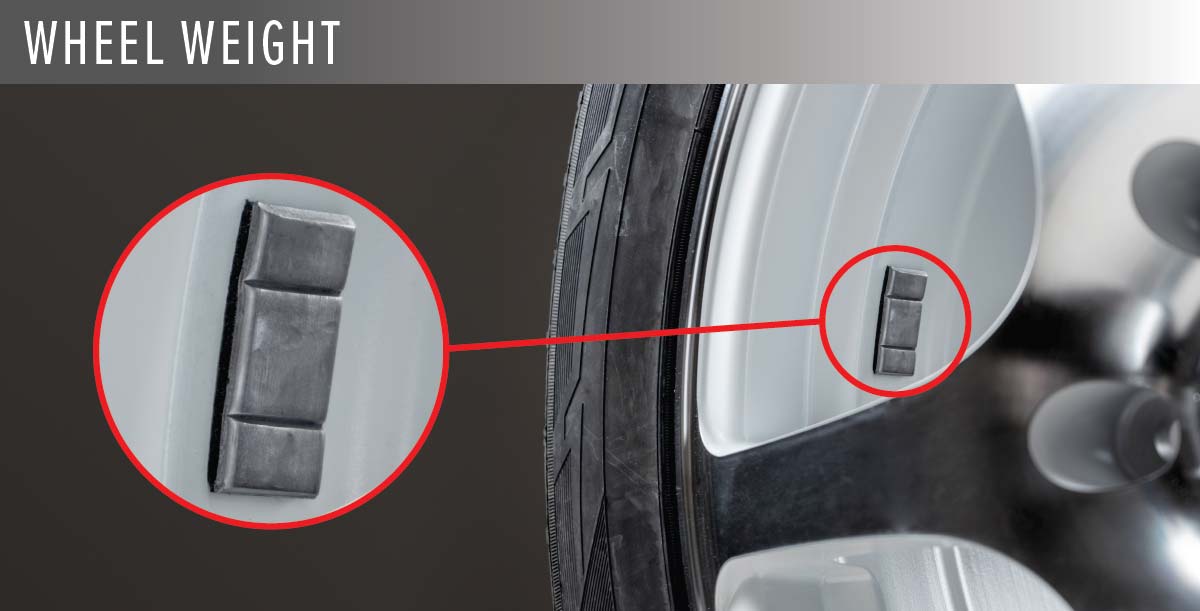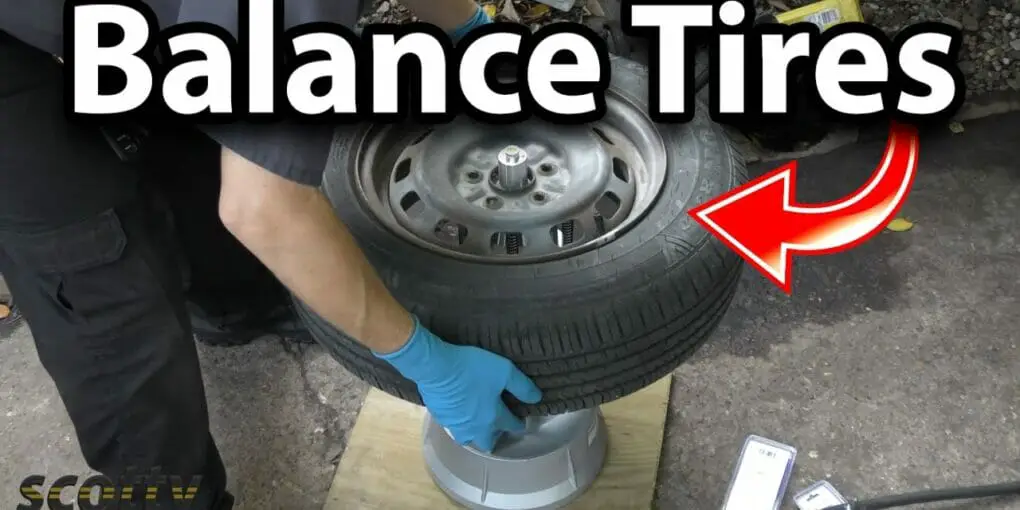How to Balance Tires on a Car – Perfectly Balancing Your Tires
Do you ever feel like your car is vibrating or pulling to one side while you’re driving? This could be a sign that your tires are unbalanced. Not only does this make for an uncomfortable ride, but it can also cause uneven tire wear and potentially dangerous driving conditions.
Balancing tires is an essential part of regular car maintenance, yet many drivers overlook it. Over time, the weight distribution of your tires can become uneven, especially if you frequently drive on rough or uneven roads. This can cause your tires to wear out faster and even damage other parts of your car.
Learning how to balance your tires is a simple and cost-effective solution to improve your car’s performance and safety. In this article, we’ll cover the basics of tire balancing, including when to do it, how it’s done, and why it’s important. Whether you’re a seasoned car enthusiast or a new driver, this guide will help you keep your tires in top shape for years to come.
How to Balance Your Car’s Tires – The Art of Achieving Tire Harmony
Can I Balance My Tires by Myself?
It is possible to balance your own tires, but it is not recommended. Tire balancing should be done by a professional because they have the tools and experience to do it correctly. Balancing your own tires can be dangerous if not done properly.
How Do I Know If My Tire Need to Be Balanced?
Your car’s tires are essential to its performance and safety. While it may seem like a daunting task, understanding how to tell if your tires need to be balanced is actually quite simple. Here are a few tips:
Check for uneven wear on your tires. If you notice that one tire is wearing down more quickly than the others, it likely needs to be balanced.
Look for signs of vibration while driving. If your steering wheel or seat vibrates while you’re driving, it could be an indication that your tires are unbalanced.
Have your mechanic check the balance of your tires during routine maintenance appointments. This is the best way to ensure that they remain in good condition.
How Much Does It Cost to Have Wheels Balanced?
If you’re noticing that your car is vibrating when you drive, or that the steering wheel is shaking, it’s likely that your wheels are out of balance. This is a common issue that can be easily fixed by having your wheels balanced. But how much does it cost to have wheels balanced?
The average cost to have wheels balanced is between $40 and $80. However, this will vary depending on the type of vehicle you have and where you take it to get serviced. For example, if you have a luxury car, the cost may be on the higher end.
And if you go to a specialty shop or dealership, they may charge more than an independent garage. But in general, expect to pay around $50 to $70 to have all four of your vehicle’s tires balanced. This price includes both the labor and materials needed to do the job.
So if you’re experiencing any vibration or shaking while driving, get your wheels balanced as soon as possible – it’s a relatively inexpensive fix that could save you from bigger problems down the road!
What is the Most Accurate Way to Balance a Tire?
Assuming you are talking about a car tire, the most accurate way to balance a tire is to use a tire balancing machine. This machine will spin the tire and measure the amount of weight needed to be added to the inside or outside of the tire to make it balanced.

How to Balance a Tire at Home
It is not difficult to balance a tire at home, but it does require some patience and attention to detail. The first thing you’ll need to do is gather a few supplies: a clean work surface, a tire balancer, and weights. You’ll also need a lug wrench and jack if you don’t already have them.
Once you have your supplies gathered, the first step is to remove the old tire from the vehicle. Use the lug wrench to loosen the lug nuts, then jack up the vehicle so that the wheel is free from the ground. Remove the old tire and set it aside.
Next, take your new tire and place it on the rim. Make sure that it is seated correctly and that the valve stem is pointing up. Once the tire is in place, use the tire balancer to spin it until it balances itself out. This may take some time, so be patient.
Finally, once the balancer indicates that the tire is balanced, put weights on each side of the rim according to where they are needed. Be careful not to put too much weight on one side or else you risk throwing off the balance again.
With all of your weights in place, tighten down your lug nuts and lower your vehicle back to the ground. That’s it! You’ve now successfully balanced your own tire at home!
How to Balance a Tire on a Machine
If you’ve ever wondered how to balance a tire on a machine, wonder no more! Here are easy instructions to follow so that you can get your tires balanced in no time.
First, you’ll need to gather some supplies. You’ll need a balancing machine, weights, and your tire. Make sure the area you’re working in is clean and free of debris.
Next, place the tire on the balancing machine. Most machines have cones that the tire will sit on make sure the tire is seated properly before proceeding. Once the tire is in place, add weights to the machine until it’s balanced. The amount of weight will vary depending on the size and type of tire you’re using.
Now it’s time to test out your newly balanced tire! Take it for a spin around the block or down the street and see how it feels. If everything feels good, then you’re all set!
If not, readjust the weights until it’s just right. Balancing tires may seem like a daunting task, but following these simple steps will make it a breeze!
How to Tell Which Tire is Out of Balance
If your car is vibrating while you’re driving, it’s likely that one or more of your tires is out of balance. There are a few ways to tell which tire is the culprit. First, take a look at the tread on each tire.
If you see any uneven wear, that’s a good indication that the tire is out of balance. Second, check the sidewalls of the tires for bulges or other irregularities. Third, ask your mechanic to check the wheel bearings and suspension components for any damage or wear.
Once you’ve determined which tire is out of balance, there are a few different ways to fix the problem. The most common method is to add weights to the rim of the tire until it’s balanced again. You can also have your mechanic adjust the suspension or replace damaged components if necessary.

Frequently Ask And Qiestions
If you’re experiencing vibrations or shaking while driving your car, it may be time to balance your tires. Balancing your tires ensures that the weight of the wheel and tire assembly is evenly distributed, resulting in a smoother ride and reducing wear and tear on your tires.
In this FAQ section, we’ll go over the basics of how to balance tires on a car, including when to do it, what equipment is needed, and how to identify if your tires need to be balanced.
How do I know when the tire is balanced correctly?
After the tire has been installed and balanced, take the vehicle out for a test drive on a smooth, straight road.
Pay close attention to the steering wheel. If it vibrates or shakes, it may indicate that the tire is not balanced correctly.
If the steering wheel does not shake, listen for any unusual noises or vibrations coming from the tires. A balanced tire should rotate smoothly and quietly.
If the tire is still vibrating or making noise, bring the vehicle back to the mechanic who balanced the tire. They may need to adjust the weights or rebalance the tire.
Repeat the test drive until the tire is balanced correctly.
What are the different types of balancing weights?
The first type of balancing weight is clip-on weights. These are weights that are attached to the rim of a wheel using clips or clamps.
The second type of balancing weight is adhesive weights. These weights are attached to the inside surface of the wheel using a strong adhesive.
The third type of balancing weight is spoke weights. These are small weights that are attached to the spokes of a wheel, rather than the rim.
The fourth type of balancing weight is centering cone weights. These are weights that are placed on the centering cone of a wheel balancing machine to help balance the wheel.
The fifth type of balancing weight is hub-centric balancing rings. These are rings that are placed on the hub of a wheel to center it on the wheel balancing machine.
The sixth type of balancing weight is rim screws. These are small screws that are inserted into the rim of a wheel to help balance it.
The seventh type of balancing weight is stick-on weights. These are weights that are attached to the inside surface of a wheel using a strong adhesive, similar to adhesive weights. However, stick-on weights are typically thinner and more flexible than adhesive weights, making them easier to install in tight spaces.
How do I know when the balancing weight is properly placed on the tire?
Step 1: Start by mounting the tire on the wheel and then placing it on a balancing machine.
Step 2: Turn on the balancing machine and let it spin the wheel and tire assembly.
Step 3: The balancing machine will display the amount and location of weight needed to balance the tire.
Step 4: Add or remove weight as indicated by the balancing machine.
Step 5: Keep adding or removing weight until the machine indicates that the tire is balanced.
Step 6: Check the machine’s display to ensure that the weight is placed in the correct location on the tire.
Step 7: Spin the wheel and tire assembly again to make sure that it is still balanced.
Step 8: Once the machine indicates that the tire is properly balanced, remove it from the machine and mount it on the vehicle.
Step 9: Test drive the vehicle to ensure that the tire is properly balanced and there are no vibrations or wobbling.
Conclusion
In conclusion, balancing tires on a car is an important maintenance task that should not be overlooked. It can improve the overall performance of the vehicle, increase its lifespan, and ensure a smoother and safer ride.
While it is possible to balance tires at home with the right equipment, it is recommended to seek the help of a professional mechanic to ensure the job is done correctly.
By regularly balancing tires, drivers can save money on costly repairs and replacements in the long run, as well as enjoy a more comfortable and efficient driving experience.


